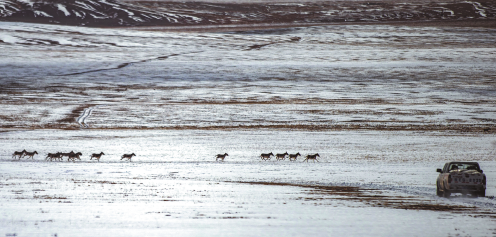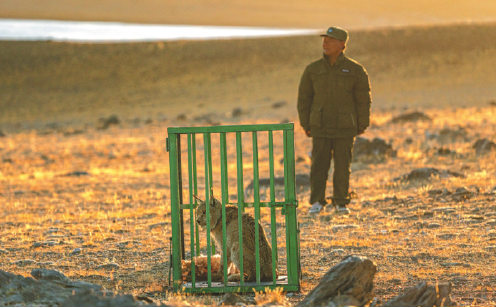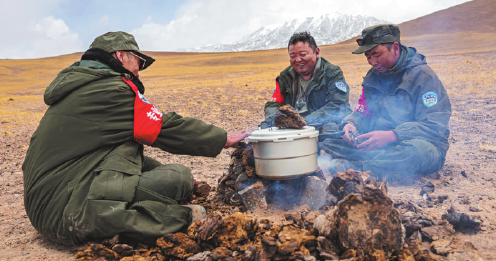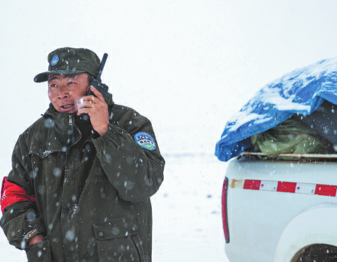Wildlife has friends in high places

In May, as the Changtang National Nature Reserve remains veiled under a blanket of snow and ice, wildlife begins to stir.
The reserve, in Southwest China's Xizang autonomous region, witnesses a surge in activity, prompting dedicated conservationists and wildlife rangers to spring into action across the area's protection stations.
Rangers of the Norbu Yugyel wildlife protection team in Nyima county, Nagchu, embarked on a concentrated two-week patrol on May 7 of the core area spanning more than 30,000 square kilometers within the reserve.
Named after a heroic ranger who died in a fight against poaching, the station is among the 73 wildlife protection stations established at the reserve since 2015.
Braving the harsh weather conditions year-round and traversing uninhabited regions to safeguard the area, the rangers guard the main road leading to the no man's land of Changtang.
Situated in the northern part of Xizang, the reserve has no human inhabitants in its core area, and serves as a sanctuary for a unique high-altitude ecosystem and a variety of large hoofed animals.
Changtang, meaning "northern wilderness", covers a total area of 298,000 sq km, making it the highest-altitude and largest natural reserve in China.
It stands as one of 36 global biodiversity hotspots, acting as a crucial freshwater reservoir, climate stabilizer, and a dense habitat for the country's rare and endangered high-altitude wildlife.
Biodiversity hotspots are regions that are biologically rich — and deeply threatened.
Established as an autonomous region-level reserve in 1993, it was upgraded to a national-level reserve in 2000. Encompassing seven counties in Nagchu and Ngari prefecture in Xizang, the reserve primarily aims to preserve the intact and unique high-altitude ecosystem and diverse large-hoofed species. It also features extensive modern glaciers on the Qinghai-Tibet Plateau, spanning over 3,596 sq km. As the core and epitome of the plateau, it represents a geographical unit with the most distinct high-altitude ecological characteristics.
Preliminary records indicate the presence of 390 plant species and 158 animal species, including 16 species under national first-level protection and 30 under national second-level protection.
As a major habitat for the Tibetan antelope under first-level protection in China, rangers in the Changtang reserve have seen an increase in antelope population, thanks to the country's efforts to improve its habitat and crack down on poaching.








Today's Top News
- China remembers victims of Nanjing Massacre, 88 years on
- New plan will be a road map for a stronger future
- Taiwan's character of the year a vote against confrontation
- Strengthened resilience key for economy
- Video sheds new light on Japan's wartime atrocities
- Xi: World yearns for peace, trust more than ever






























